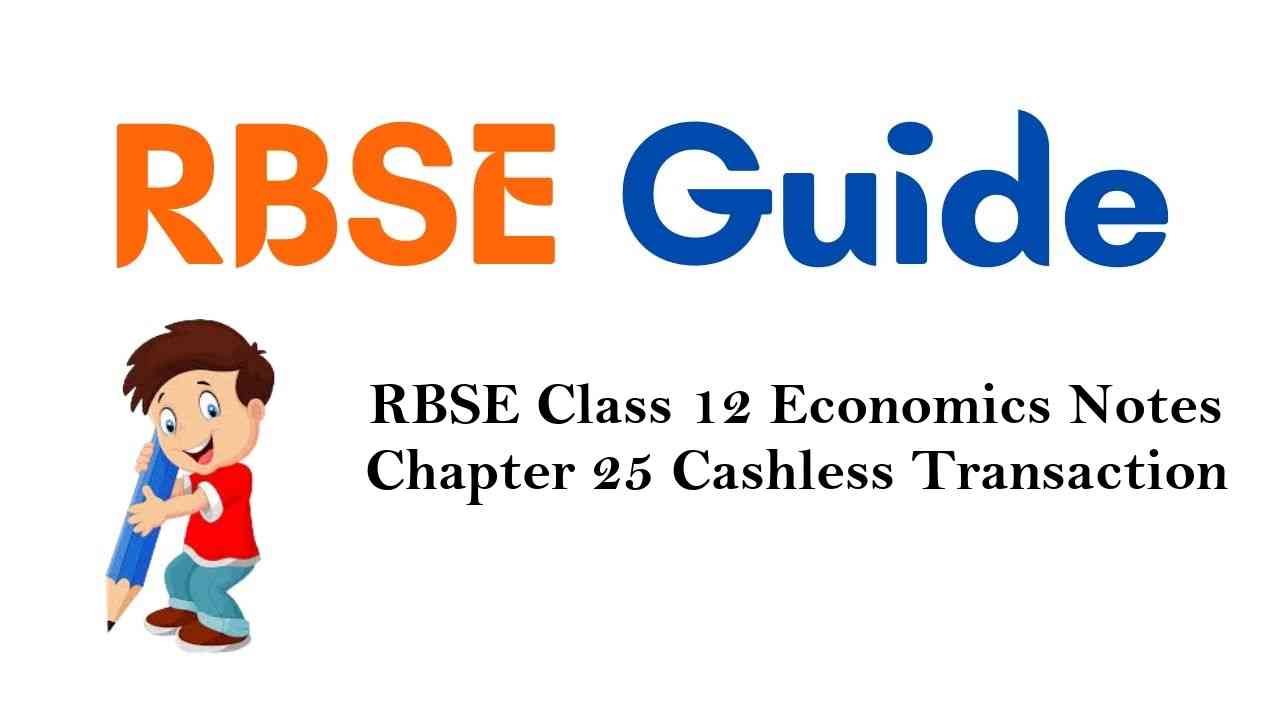Rajasthan Board RBSE Class 12 Economics Notes Chapter 25 Cashless Transaction
Due to rapidly changing environment in 21st century, economies of several countries are transforming from underdeveloped to developing economies.
In the economies of developing countries, governments are motivating the public for cashless transactions.
Indian economy, among the ten biggest economies of the world, is also motivating public for cashless transactions.
The government is continuously putting efforts to make people aware of cashless transactions.
E-commerce is being used in India since even before a decade.
Ecommerce or E-business transactions are operated through Internet.
![]()
In e-commerce, not only can the customer purchase goods and services from home, but a seller also can sell his products across the world with the help of internet.
Today computer, telecommunication and cable television is used at large scale for business transactions.
From 1990 onwards, business firms had started using internet facility for advertisement and sales promotion.
In the 21st century, immense opportunities and competition is being provided to online
business.
![]()
Cashless transaction is an economic transaction which can also be done through the use of credit card, ATM cum debit card, internet banking and cheque.
Cashless transaction is a part of e-commerce which started in India a decade ago.
Payment through cheque or bank draft, payment through internet banking, payment by swipe machine, payment through ATM machine, payment through USSD technique and payment by mobile app. etc. are the parts of cashless transaction.
Many banks have started E-wallet service for cashless transactions.
Government of India had started the ‘BHIM’ (Bharat Interface for Money) application for cashless transactions.
The name of ‘BHIM’ app is dedicated to Dr. Bhimrao Ambedkar.
Increased cash transaction in the economy encourages black marketing and corruption.
Cashless transaction is a need of time and is also convenient and safe for the economy.
![]()
In comparision to cash-based transaction, cashless transaction is easy and comfortable.
Cashless transactions have the following advantages :
- Saving of money and time.
- Freedom from keeping money in cash.
- Reduction of pressure on bank.
- Increase in revenue.
- Reduction in black marketing.
- Restrictions on illegal activities.
Cashless transactions have the following limitations :
- Problem for illiterate class.
- Lack of banking habits.
- Apprehension of fraud.
- Useless in many kinds of transactions.
- Limited expansion of banking facilities.
- Lack of effective laws to control cyber crimes.
![]()
Precautions while dealing in digital transactions :
- Never disclose your secret number of ATM cum debit card in response to the messages recieved from banks or any other enquiry.
- If you suspect any development, immediately contact the banking authority.
- Never keep your secret PIN in written form along with your credit / debit card.
- Use mobile app only alter verifying it officially.
- While using net banking, keep updating your account statement.
Important Terminology
- E-commerce : E-commerce is an advanced and new technique of business in which business is operated through internet.
- Cashless transaction : Financial (monetary) transactions without the use of money in cash form are called cashless transactions.
- BHIMApp : Government of India has issued BHIM App (Bharat Interface for Money) for digital transactions.
- USSD (Unstructured Supplementary Service Data) : Through this technique, we may use the digital transactions service without the help of smartphone and internet facility. Digital transactions are made through feature phones.
- AEPS (AADHAAR Enabled Payment System) : Through this technique, we make payment through Aadhar card on POS (micro ATM) machine by scanning our finger prints.
- OTP : One time password.
